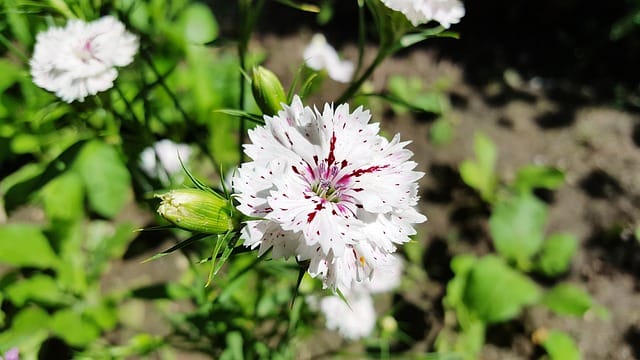How to grow Dianthuses
Dianthuses, also known as carnations or pinks, are beautiful and fragrant flowers that can add color and charm to any garden

In this article:
- Introduction
- Choosing the Right Variety
- Selecting the Ideal Location
- Soil Preparation
- Planting the Dianthuses
- Watering and Moisture Requirements
- Fertilizing the Dianthuses
- Pruning and Deadheading
- Dealing with Pests and Diseases
- Winter Care
- Propagation Techniques
- Frequently Asked Questions
- Conclusion
Introduction
Dianthuses, also known as carnations or pinks, are beautiful and fragrant flowers that can add color and charm to any garden. This article will guide you through the process of growing and caring for Dianthuses, ensuring that you can enjoy their stunning blooms year after year.
Choosing the Right Variety
With numerous varieties of Dianthuses available, it's important to choose the one that suits your preferences and growing conditions. Some popular options include Cheddar Pinks, Sweet Williams, and Border Carnations. Consider factors such as flower size, color, and height when selecting the ideal variety for your garden.
Selecting the Ideal Location
Dianthuses thrive in areas with full sun exposure, so choose a location that receives at least six hours of direct sunlight per day. Ensure the chosen spot has good air circulation and is not prone to waterlogging to prevent fungal diseases.
Soil Preparation
Prepare the soil before planting the Dianthuses. They prefer well-drained soil rich in organic matter. Incorporate compost or aged manure to improve soil fertility and drainage. Test the soil pH and aim for a slightly acidic to neutral range, around 6.0 to 7.0.
Planting the Dianthuses
Plant Dianthuses in early spring or fall, avoiding extreme weather conditions. Dig a hole that is slightly wider and deeper than the plant's root ball. Gently place the plant in the hole, backfill with soil, and firm it gently around the roots. Space the plants according to the recommended distance for the variety you've chosen.
Watering and Moisture Requirements
Water the Dianthuses regularly, keeping the soil evenly moist but not waterlogged. Aim to provide about an inch of water per week, either through rainfall or irrigation. Avoid overhead watering as it can encourage the development of diseases. Mulching around the plants can help retain soil moisture and control weeds.
Fertilizing the Dianthuses
Feed your Dianthuses with a balanced slow-release fertilizer in early spring and again in mid-summer. Follow the manufacturer's instructions for the specific product you are using. Overfertilizing can lead to excessive foliage growth at the expense of flowers, so ensure you apply the fertilizer according to the recommended dosage.
Pruning and Deadheading
To promote continuous blooming and maintain a neat appearance, deadhead the spent flowers regularly. Pinch or cut off the faded blooms just above a set of healthy leaves or above the point where the flower stem meets the main stem. Additionally, trim back any leggy or overgrown stems to encourage bushier growth.
Dealing with Pests and Diseases
Dianthuses are generally resistant to pests and diseases. However, common issues may include aphids, spider mites, and powdery mildew. Monitor your plants regularly, and if you notice any signs of infestation or disease, treat them promptly with suitable organic or chemical controls. Maintaining good garden hygiene and improving air circulation can also help prevent these issues.
Winter Care
Provide some winter protection for your Dianthuses to help them survive the colder months. Apply a layer of mulch around the base of the plants to insulate the roots and protect them from freezing temperatures. Consider covering the plants with a frost blanket or moving containers indoors if temperatures drop significantly.
Propagation Techniques
There are several ways to propagate Dianthuses, such as through seeds, stem cuttings, or division. Seeds can be sown directly in the garden or started indoors and transplanted. Stem cuttings can be taken during the summer and rooted in a well-draining rooting medium. Division involves separating established clumps into smaller sections and replanting them.
Frequently Asked Questions
Q: How long do Dianthuses bloom?
Q: Can Dianthuses be grown in containers?
Q: Do Dianthuses attract pollinators?
Q: How often should I fertilize Dianthuses?
Conclusion
Growing Dianthuses can be a rewarding experience, allowing you to enjoy their vibrant colors, delicate fragrance, and long-lasting blooms. By following the guidelines provided in this article, you'll be well-equipped to cultivate healthy and beautiful Dianthuses in your garden.
